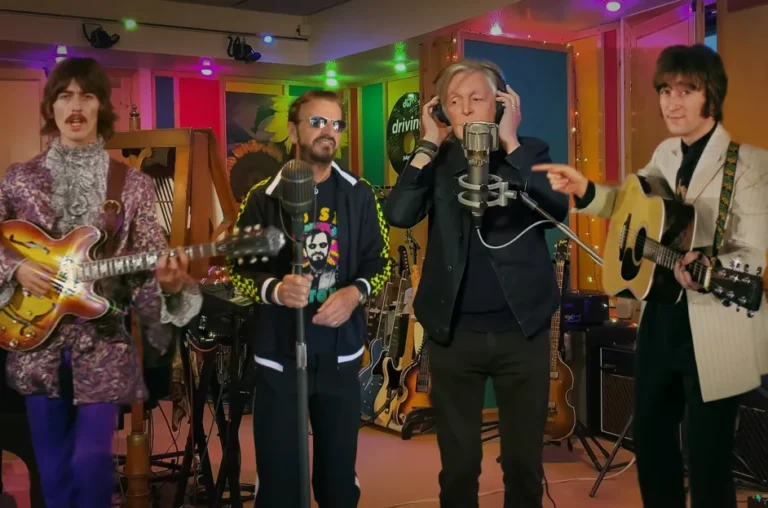The Ultimate Music Theory and Industry Dictionary For Every Fangirl

Have you ever heard your favourite song and wondered why a melody was so satisfying to hear?
Perhaps your fangirl life has inspired you to learn more about the music industry, but you’re unsure where to begin. Don’t worry, we’ve got you.
Understanding music theory enables you to assign names to the sounds you hear in your favourite songs, fostering an entirely new appreciation for music. It also builds your communication skills to describe your favourite musical moments effectively.
Music theory is the study of the elements and structures that create music. It is the foundation of the language used to transform musical ideas into tangible works and communicate them to others, including both the audience and fellow musicians. It transcends genres, providing a backbone for various musical styles, from classical to pop rock and everything in between.
The music industry encompasses everyone involved in the process of producing, distributing, and promoting music. It is incredibly vast, including your favourite performers, tour photographers, studio engineers, artist managers, and so much more. As fans, we are also involved in the industry, supporting artists’ journeys and forming public opinions that influence growth and development.
Understanding different concepts and areas of the music industry clarifies how each piece contributes to the complexity and beauty of our global musical landscape. When used in tandem with music theory, it provides a deeper knowledge of all the behind-the-scenes work that goes into bringing music into the world.
As a musician for over a decade, this dictionary could go on forever, but for now, we will go over some high-level terms to start your educational journey.
Music Theory
Notes & Scales: All music starts with a note. There are twelve unique notes represented by the letters A, B, C, D, E, F, and G, with each natural note having sharp (#) and flat (b) versions that fall a half step lower or higher than it. The notes are then organised into scales, which follow a specific order from lowest to highest. The diatonic scale is the most common, but there are numerous types.
Chords: Chords are a combination of three or more notes played at the same time. They can take different forms and evoke various emotions, such as major chords, typically associated with joy, and minor chords, typically associated with sadness or tension. They are the foundation of harmonies!
Rhythm: Rhythm is how the music moves over the underlying beat. It is the pattern of note and rest durations that gives the music its unique character. The rhythm can communicate different vibes, such as choppy notes for restlessness or smooth melodies for calmness.
Riffs & Runs: Though often confused with one another, riffs & runs are not the same thing. A riff is a short melodic phrase that complements the melody without overly standing out, can be notated in the structure of a song, and performed vocally or with instruments like the guitar. A run is a longer phrase that is intended to stand out and show vocal prowess, as they are exclusively done by singing. Brandy is a wonderful example of demonstrating this vocal agility with ease.
Melody & Harmony: A melody is an ordered pattern of pitches that is the main theme carried throughout the entire piece. Harmony supports the theme with simultaneous notes, adding richness and depth to the piece. This fills out the composition instead of simply one line for the entire duration. These are two of the most basic elements of a song structure.
Consonance & Dissonance: Consonance and dissonance are two sides of the same coin. Consonance is pulled from the song’s scale to evoke stable emotions, where the song feels complete and resolved. Dissonance, also known as “crunchy chords,” is pulled from outside the song’s scale to evoke feelings of uneasiness where we desire for the clashing sound to be released. Though it may sound wrong initially, it builds tension and makes the resolution so satisfying. Bohemian Rhapsody by Queen is a fantastic example of this.
Key: The key of the song is the group of notes that the music is based on, providing the harmony with its building blocks. This is typically identified on the first note of the scale and relative pitches/chords in the piece. This can be identified in sheet music by the key signature, or the collection of sharps or flats at the beginning of the piece, or by ear by finding the “home” note, or the note the song typically always resolves to.
Modulations & Key Changes: Both of these elements take a song into a sonically different area than the rest of the song had been in. Modulations do so temporarily before returning to the original key. This can be heard in the pre-chorus of Leave The Door Open by Silk Sonic or the bridge of Bye by Ariana Grande. Key changes, however, permanently last, and the song does not return to the original key. This is famously notable in Love on Top by Beyoncé or, most recently, Soda Pop by the Saja Boys (KPop Demon Hunters).
Dynamics & Expression: Dynamics is the degree of loudness or intensity in a song, while expression adds emotion and feeling. They can work in tandem, such as in Billie Eilish’s What Was I Made For?, where she featured dynamically soft vocals that were achingly beautiful in expression. With these techniques it helps convey the quiet angst from the epiphany that the music is trying to communicate.
Transposition: Transposition is the action of rewriting or performing a piece in a key that is higher or lower. This process is done by raising or lowering each pitch at the same interval. It’s similar to a key change, but for the entire piece instead of after a certain section. This can be seen on Broadway to accommodate the vocal range of rotating lead cast members or on tour when the studio recording key is not comfortable for an artist to perform.
Music Industry
EP, LP & Album: An EP, or extended play, is a mini-album usually featuring three to six songs. An LP, or long-playing, is the vinyl/phonograph record that accompanies a full-length album. An album is a collection of recorded tracks that are released as a unit, typically surrounding a common theme, style, or story during a certain period. Of the three, EPs are the most cost-effective to release.
Licensing: Music licensing is the legal use of copyrighted music to ensure that the intellectual property is protected and copyright owners are paid for the use of their works. There are several types of licenses depending on the project for which it is intended to be used. License agreements include usage and term rights, such as how long it can be used for.
Synchronisation: Synchronisation is the process of licensing a sound recording to be synced with a visual work. This is the license obtained when a song is used in movies, TV, video games, and other media. For this use, two licenses must be obtained for the sound recording and the underlying composition in order to be used.
Master Recording: A master recording is just as it sounds — the official, original file of the sound recording fixed in tangible form after all the post-recording mixing and production edits. Anything after it is considered a copy. “Owning your masters means holding copyright ownership of the original sound recording, which is a priority for many recording artists (re: Taylor Swift).
Record Label: Whether it’s an indie label, Big Three label, or anywhere in between, record labels are companies that manufacture, distribute, and promote the sound recordings of the artists on their roster. They help craft the artist’s brand and target audiences to achieve commercial success. There are various departments, including Artist & Repertoire (A&R) to discover and develop new talent, Marketing to plan and execute promotional campaigns, and Artist Development to create a plan for the careers of the signed artists.
Advances & Royalties: Advances act as investments, giving a recording artist or songwriter income through a loan while they write or record until royalties generate revenue. It is an upfront payment that is paid back to the label through recoupment, or collecting the investment back with the artist’s royalties. Royalties are the compensation paid to an artist and other rights holders of a song in exchange for the licensed use of the music. These are collected from streaming, radio, downloads, etc.
Cover, Interpolation & Sample: A cover is a recording by an artist who is not the original songwriter. A license may be needed, but it is not always required. I know we’ve all heard our fair share of covers, but one of my favourites is I Will Always Love You by Whitney Houston (it’s a Dolly Parton song!). An interpolation includes a pre-existing melody or lyric into a new work, which requires a license from the copyright owner of the song. A popular example is 7 Rings by Ariana Grande, featuring the melody of My Favorite Things from the 1959 musical The Sound of Music. A sample is when a pre-recorded, copyrighted sound recording, usually from the master, is incorporated into a new sound recording that has different copyright owners. Since both the sound recording and underlying composition are being used, two licenses must be obtained. An example is Last Last by Burna Boy, which samples Toni Braxton’s 2000 single He Wasn’t Man Enough.
Work Made For Hire: A work made for hire is when one party employs another to create a musical work for them, and the former holds all the rights. For example, if a movie studio employs an artist to create a song for the soundtrack of their film, it can be done as a work made for hire where the studio is considered the legal author of the work. Thus, they would own all the rights, and the artist would not have any claim to it.
Digital Service Provider: Digital service providers, or DSPs, are streaming platforms like Spotify, Apple Music, and Pandora or an online store like iTunes that distributes digital audio to consumers. They have access to the songs, podcasts, or other works through, you guessed it, licenses!
Performing Rights Organisation: A performing rights organisation (PRO) ensures that songwriters and all other rights holders receive performance royalty income when their musical works are broadcast or played publicly. They also issue public performance licenses for musical compositions on behalf of copyright owners. In the U.S., these associations are ASCAP, BMI, SESAC, and GMR. In the UK, this is PRS for Music Limited.
If you want to learn more about music theory and the music industry, Method Behind The Music, Exploration Copyright Administration, and Spotify for Artists are some resources that helped inform this article and are great places to start. There is so much more than what was covered, but I hope this gives you the foundational knowledge to recognise things perhaps you hadn’t before.
Happy learning!







